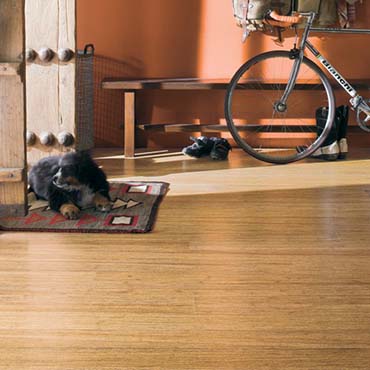Bamboo Flooring

The Bamboo Revolution: Elevating Spaces with Sustainable Elegance
In the realm of interior design, the integration of nature and sustainability has become more than a trend—it's an ethos. Among the front-runners of this green revolution is Bamboo Flooring, a material that not only stands out for its aesthetic appeal but also for its environmental friendliness. This article delves into the significance of Bamboo Flooring in modern interior spaces, offering insights and tips for interior designers, decorators, and design consultants.
The Allure of Bamboo: Versatility Meets Sustainability
Bamboo, a grass that shares many characteristics with hardwood, has emerged as a sought-after material in
flooring design. Its rapid growth and ability to regenerate quickly make it an eco-friendly option, addressing the increasing demand for sustainable building materials.
Types and Species in Bamboo Flooring
Bamboo Flooring is available in various styles, each offering a unique aesthetic:
- Horizontal Bamboo: Showcases the natural 'knuckles' or nodes of the bamboo, giving a more traditional, linear appearance.
- Vertical Bamboo: Features a uniform, striped look, as the bamboo strips are stood vertically and pressed together.
- Strand-Woven Bamboo: Created by compressing bamboo fibers under high pressure, this type boasts a grain-like hardwood and enhanced durability.
Durability and Maintenance
Bamboo's natural hardness makes it resistant to wear and tear, rivaling traditional
hardwood floors. Its maintenance is straightforward – regular sweeping and occasional mopping with a bamboo-specific cleaner suffice.
Design Versatility
From minimalist to rustic, Bamboo Flooring fits seamlessly into various design aesthetics. Its range of colors, from natural light hues to carbonized darker tones, offers designers and decorators a palette to complement any interior theme.
Enhancing Spaces with Bamboo Flooring
The use of Bamboo Flooring can dramatically alter the ambiance of a space. Its warmth and natural texture add a sense of serenity and organic elegance. In spaces like
living rooms or studios, it brings a balance between sophistication and comfort.
Tips for Selecting the Ideal Bamboo Flooring
- Consider the Room's Usage: High-traffic areas might benefit from strand-woven bamboo due to its durability.
- Color Coordination: Select a shade that complements the room's color scheme and desired atmosphere.
- Quality Matters: Look for bamboo flooring with a substantial warranty, indicating its durability and quality.
Recent Trends and Innovations
The world of Bamboo Flooring is continuously evolving, with recent trends and innovations enhancing its appeal:
- Eco-Friendly Finishes: Low-VOC (Volatile Organic Compounds) finishes are becoming popular, contributing to healthier indoor air quality.
- Wider Planks: Mimicking the trend in hardwood, wider bamboo planks offer a contemporary, spacious feel.
- Mixed-Materials: Integrating bamboo with other materials like reclaimed wood or metal accents is gaining traction for a unique, eclectic look.
The Impact on Interior Decor
Bamboo Flooring's impact on interior decor is twofold: aesthetic and environmental. Its natural beauty elevates spaces, while its sustainability resonates with the growing eco-conscious clientele. It's not just a flooring option; it's a statement of style and environmental responsibility.
Conclusion
Bamboo Flooring represents a fusion of art, functionality, and environmental stewardship. For interior designers, decorators, and consultants, it offers a versatile and sustainable medium to transform spaces. As we move towards more eco-conscious living, Bamboo Flooring stands as a testament to the fact that beauty and sustainability can indeed coexist harmoniously.
Disclaimer: The information provided in this article is for general informational purposes only. While we strive to ensure the accuracy and reliability of the information presented, we make no warranties, express or implied, about the completeness, accuracy, reliability, suitability, or availability with respect to the content. Any reliance you place on such information is strictly at your own risk. We recommend consulting with professionals for specific advice tailored to your project’s needs, particularly regarding building codes, regulations, and product specifications.
Under no circumstances shall we be liable for any loss or damage, including without limitation, indirect or consequential loss or damage, arising from the use of, or reliance on, the information provided in this article.




